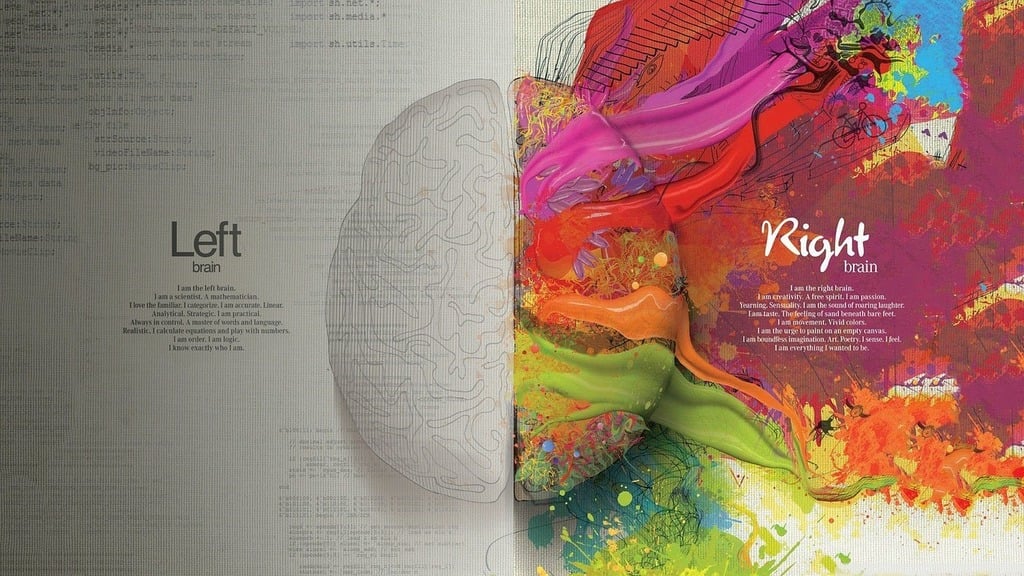
The mirror.
It shows a different, distorted view.
A view outlining all the curves and bumps that feel so out of place.
A reflection that was grown to be ashamed of. More things to cover up and hide.
The parts that used to feel so normal now feel hideous and disgusting.

Dysmorphia, particularly body dysmorphic disorder (BDD), is a mental health condition where individuals obsess over perceived flaws in their appearance, often focusing on imagined or greatly exaggerated details. In an era where social media and peer comparison are part of daily life, more teens are developing a distorted view of themselves, leading to serious emotional and social consequences.
“Every year, I would hate when school picture day happened. Some of the most prominent facial features I have are my hooded eyelids, large forehead, and large lips,” an anonymous alumnus said. “When I smiled for the picture, my eyes would essentially disappear, my hair would never perfectly cover my forehead and I’d try to tuck in my lips to appear smaller. It never left me satisfied with my picture.”

Dysmorphia can lead to significant distress in high school students, impacting their self-esteem, academic performance, social life and mental health. Students with body dysmorphia may feel deeply insecure about specific physical features, such as their skin, weight, or facial structure, despite these issues being minor or nonexistent to others. This constant self-scrutiny can affect their mood, causing anxiety, depression and even leading to self-harm or suicidal thoughts.
“It started by seeing what people would call, ‘morning skinny’. I liked seeing myself like that and started skipping breakfast to make it last longer. Skipping breakfast turned into skipping lunches. Skipping lunches turned into not eating anything at all for days at a time,” an anonymous freshman said. “To this day I still have a habit of skipping meals before certain events, such as pool parties, events where I have to wear a dress, or even just going out with my friends.”

One common manifestation is an obsession with body weight or shape, especially in high-pressure environments like high school sports. For example, a student-athlete might believe their legs look ‘too big,’ leading them to excessively restrict food intake or exercise. Another student might fixate on skin imperfections, covering their face, or avoiding eye contact in social settings. Many will spend excessive time in front of mirrors or, conversely, avoid mirrors altogether.
“It’s very scary to think about knowing that I could have died due to starvation and nobody would have been there to help me,” the anonymous freshman said. “To hide the fact that I wouldn’t eat, I’d chew my food up super good, then pretend to wipe my face and spit it into the napkin. I’d later ask to go to the bathroom and flush it down the toilet. I would also cut my food into smaller pieces to make it look like I had eaten more than I did.”

The effects on school performance can be profound. For example, a student struggling with dysmorphia might avoid public presentations or group projects, fearing others will judge their appearance. They may also withdraw socially, avoiding friendships or relationships. Over time, this isolation can contribute to feelings of loneliness, exacerbating symptoms of depression and reinforcing negative self-perceptions.
“It fluctuates. Some days, I don’t feel it at all and I can just exist and be totally fine. But other days it feels so horrendous that it feels like it physically eats away at me, and I can’t help but be angry with myself despite having no control over how I was simply born,” junior Romeo Ingram said. “Sometimes I just have the inexplicable need to try and tear myself apart and reconstruct myself the way I want to be.”
The pressure to look perfect or to conform to certain beauty standards can cause students to develop an unrealistic self-image. They may constantly compare themselves to others, reinforcing the belief that they are somehow ‘not enough.’ The consequences are wide-reaching; a student might delete a photo that doesn’t receive enough ‘likes’ or obsessively edit images to appear closer to beauty standards.
“From a transgender point of view, it’s few and far between. There are the obvious ones, like my chest and my proportions. Then there are the quieter ones, like the size of my arms, my height, my voice, and sometimes even my hair,” Ingram said. “I avoid spaghetti straps and dresses like the plague, as well as short shorts, makeup, skirts, and anything ‘effeminate’.”

Dysmorphia and dysphoria are related concepts, but they differ in essential ways. While dysmorphia involves an obsession with specific aspects of physical appearance, dysphoria refers to a deep sense of discomfort or dissatisfaction with one’s body as a whole or certain parts of it. Gender dysphoria, for example, is a condition where a person’s gender identity doesn’t align with their assigned sex at birth, causing distress. This is different from dysmorphia, which is typically not connected to gender identity but to perceived flaws in physical appearance.
“It honestly started after I turned 14, though it was easy to ignore at the time. I came out to my friends and teachers when I was 12, but my dysphoria wasn’t a problem until I was 15 and I realized just how unhappy it made me to be seen as feminine or womanly,” Ingram said. “It went from being uncomfortable to downright unbearable, where I clenched my jaw and mumbled when anyone brought up my dead name or referred to me as ‘ma’am’ or ‘lady.’”
Understanding these differences is important, as dysphoria and dysmorphia require different approaches in treatment. While both may involve therapy, dysphoria is more likely to involve counseling related to gender identity, social acceptance, and, in some cases, medical intervention.
“People harass me for fun at school. That’s the honest truth of the matter. We allow people to harm one another, including the harassment of transgender people. I’ve been called names and slurs, and people have purposefully gone out of their way to learn my dead name just so that they can yell it at me from across the cafeteria,” Ingram said. “I wear a thing called a binder, which suppresses the size of the chest and demonstrates a flatter surface, as well as taping which binds less but reduces the need for a bra or binder. I also wear specific clothes such as flannels and baggy pants to try and create a boxier, boyish look for myself.”

Addressing dysmorphia in high school students requires a supportive environment where they feel validated and understood. Parents and schools can play a key role by promoting mental health awareness and implementing programs that foster self-acceptance. Counseling, support groups, and even social media education can be invaluable in helping students understand that appearance doesn’t define their worth.
“I don’t have anything to say because I’m still dealing with it, but I recently visited my aunt, who had also been overweight her entire life up until a few months ago when she started Ozempic,” senior Emma Rodgers said. “She looks amazing now and I was walking with her after we had a huge dinner and I said, ‘I can’t wait to hate myself tomorrow.’ She immediately stopped walking, frowned at me, and said, ‘What did you say?’ When I repeated myself she said, ‘As someone who has spent their entire life hating themself, don’t. It’s a waste of your time and energy and it won’t get you anywhere. It’s not worth it, especially when you’re beautiful.’”
Your donation will support the student journalists of Joshua High School. Your contribution will allow us to purchase equipment and cover our annual website hosting costs.






